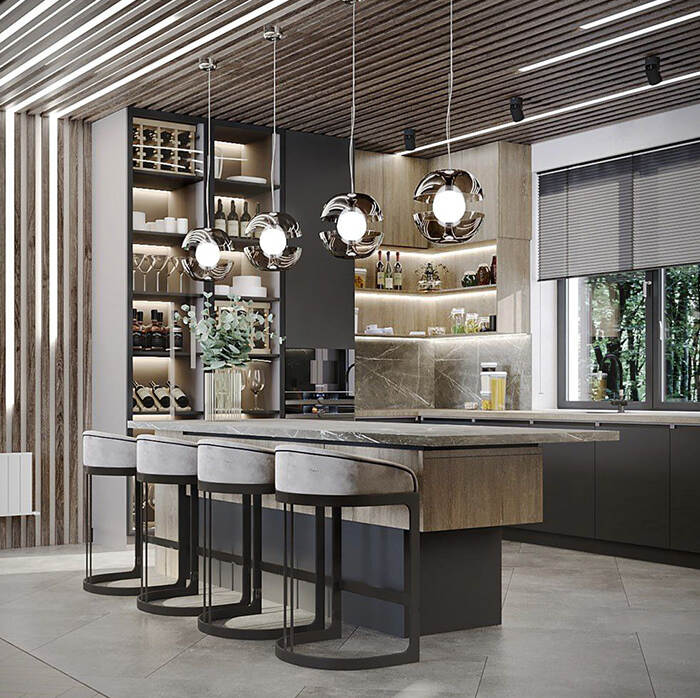Why Choose Steel? The Benefits of Steel in Construction
Why Choose Steel? The Benefits of Steel in Construction
Blog Article

When it comes to construction, choosing the right materials is crucial for the durability, aesthetics, and overall success of a project. Steel has emerged as a favorite among builders and architects alike, thanks to its unparalleled strength, versatility, and sustainability. As the building material industry continues to evolve, understanding the benefits of steel can help make informed decisions that lead to remarkable structures that stand the test of time.
In recent years, companies like Y&R Furniture have exemplified the importance of quality materials in building projects. With over 25 years of experience in the industry, this mature custom kitchen cabinet manufacturer and bathroom vanity factory has been providing comprehensive solutions for various projects across more than 20 countries. By leveraging steel alongside other materials, Y&R Furniture has consistently met the diverse needs of their clients, proving that a well-rounded approach to construction can lead to exceptional results.
Durability and Longevity of Steel
High-Quality Bathroom Vanities
Steel is renowned for its exceptional strength and resilience, making it an ideal choice for construction projects that demand longevity. Unlike other materials, steel can withstand extreme weather conditions, including harsh winds, heavy rains, and intense heat. This enduring quality ensures that structures remain intact and secure over time, ultimately reducing the need for frequent repairs or replacements. As a result, builders and developers can have confidence in the longevity of their projects when using steel.
Furthermore, steel is resistant to common issues such as rot, pests, and fire. Wood, for instance, is susceptible to termites and warping, while concrete can crack and deteriorate. In contrast, steel maintains its integrity under various stressors, providing a stable foundation for both residential and commercial buildings. This inherent durability translates into lower maintenance costs for property owners, making steel not only a robust choice but also a financially sound investment.
In addition to its strength and resistance, steel also contributes to sustainability in construction. Many steel products are made from recycled materials, and steel itself is 100 percent recyclable. This means that as buildings reach the end of their lifecycle, their steel components can be repurposed for new projects, minimizing waste and supporting environmental stewardship. By selecting steel, builders can enhance the resilience and sustainability of their constructions, aligning with modern standards for responsible building practices.
Cost-Effectiveness in Construction
Steel is increasingly becoming a popular choice in construction due to its cost-effectiveness. The initial investment in steel structures may be higher compared to other materials, but the long-term financial benefits often outweigh these upfront costs. Steel's durability and strength reduce maintenance and repair expenses over time, making it a smart financial decision for builders and developers.
Another significant aspect of cost-effectiveness is the speed of construction. Steel is prefabricated, which allows for quicker assembly on-site. This not only reduces labor costs but also decreases downtime, enabling projects to be completed on schedule. With timely project delivery, builders can minimize holding costs and begin generating revenue from their investments sooner.
Additionally, steel's versatility reduces waste and overall material costs. Custom manufacturing options, like those offered by Y&R Furniture, ensure that builders can tailor their materials to meet specific project requirements. This flexibility not only enhances design possibilities but also optimizes the use of resources, leading to a more economical construction process overall.
Sustainability and Environmental Impact
Steel is renowned for its sustainability and minimal environmental impact, making it a preferred choice in modern construction. It is 100 percent recyclable, meaning that at the end of its life cycle, steel can be repurposed into new products without losing quality. This ability to be recycled multiple times without degradation reduces waste in landfills and decreases the need for new material extraction, promoting a more circular economy.
In addition to its recyclability, steel construction also contributes to energy efficiency. Structures made from steel require less energy to maintain, as they can be designed to maximize insulation and reduce heating and cooling costs. This not only lowers operational energy consumption but also helps minimize the overall carbon footprint of the building. By choosing steel, builders can contribute to more eco-friendly practices while also meeting regulatory standards for sustainability.
Furthermore, innovations in the steel industry have led to the development of green steel technologies, which produce steel with lower carbon emissions. By utilizing advancements such as carbon capture and alternative energy sources, steel manufacturers are increasing their commitment to sustainability. This shift towards greener practices aligns with the growing demand for environmentally responsible building materials, making steel an attractive option for forward-thinking projects.
Versatility and Design Flexibility
Steel is renowned for its incredible versatility, making it an ideal material for various construction projects. It can be easily molded into different shapes and sizes, allowing architects and designers to express their creativity without limitations. Whether it is used for structural elements, roofing, or custom features, steel can adapt to a wide range of design requirements, enhancing the aesthetics of any building.
Another significant advantage of steel is its compatibility with other materials. When combined with wood, glass, or concrete, steel can create unique and striking designs that marry different textures and styles. This flexibility opens up endless possibilities for both residential and commercial projects, making it a preferred choice for innovative structures. Designers can experiment with various applications while ensuring the integrity and durability of the building.
Furthermore, steel's lightweight nature contributes to its design flexibility. This quality allows for larger spans and open spaces within buildings without the need for excessive support, providing a more open and airy environment. As a result, spaces can be utilized more effectively, promoting functionality and fluidity in design. Steel's adaptability not only meets the demands of modern architecture but also offers a canvas for creative expression in construction.
Report this page